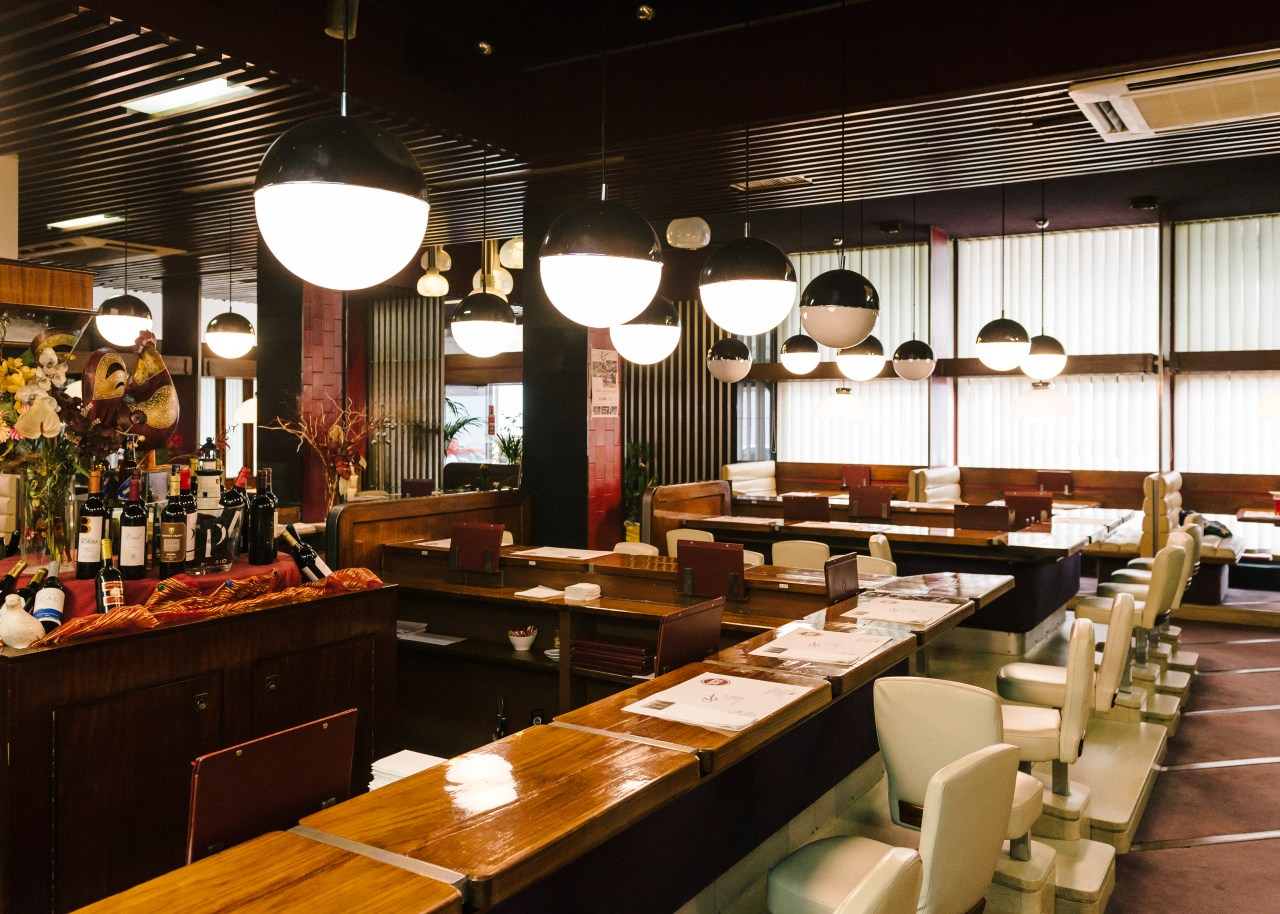A decade ago it wasn’t so easy to fall in love with Porto. The streets downtown were deserted at night, and a scarcity of cultural activities would keep you home. Today it’s quite the opposite.
Porto often appears at the top of destination wish-lists. Street art is giving more color to urban life. Several film and art festivals are creating a new cultural legacy. A generation of Portuguese entrepreneurs who studied or worked abroad were inspired to come back by the city’s renaissance and are promoting a dynamic and creative environment. Young people are renting or buying houses downtown, nightlife is lively from Monday to Monday, and there are more cultural events than there is time to attend.
This is all good for a city’s—and its inhabitants’—ego. And Porto maintains its enduring treasures as well: locals who love to host, high-quality gastronomy, urban parks, and the sea. The best way to explore is to walk—and then walk some more. Once you are caught in Porto’s spell, it is impossible to reverse it: Be prepared for eternal love.

One of the best ways to discover how a city wakes up is to wander around its market. The two-story Mercado do Bolhão (Bolhão Market) is invariably mentioned in every travel guide. Lest this fact make you afraid that the market will be too touristy, rest assured that starting the day in this 19th-century neoclassical monument is always a good choice. Wise and sweet ladies will call to you, “My love, my little sweet love,” as they try to sell you their fruits and vegetables. Give in and get some for fuel between meals: juicy pears and apples or seasonal findings like figs, cherries, blueberries, and strawberries.
I love to shop here because it still has its authenticity and the prices are reasonable. I feel as if I’m invading my mom’s kitchen; the market is a haven of fresh fish, meat and bread, colorful and fragrant flowers, and fresh and dried spices that fill your nose with the smell of cinnamon, curry, thyme, oregano, coriander, and rosemary. We can’t live without these secret potions, as Porto does not live without this vibrant market.
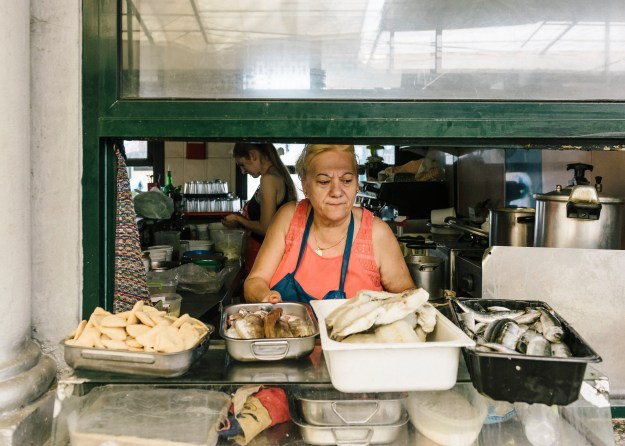
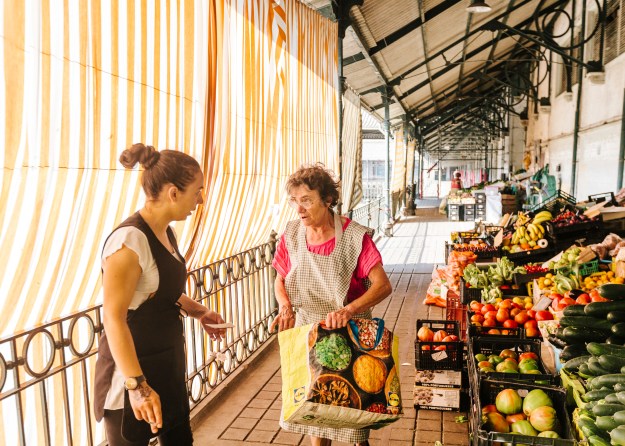
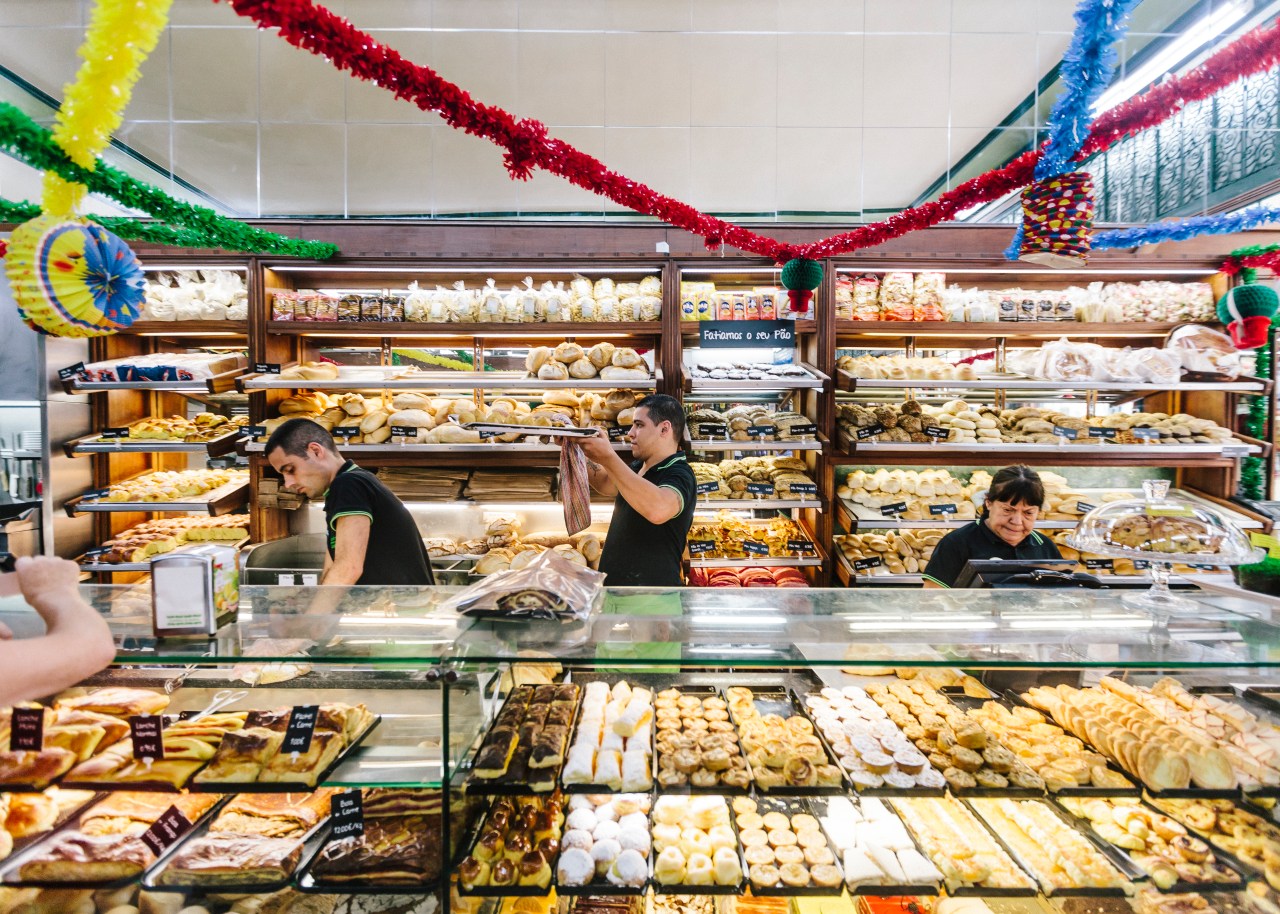
If you wish to have breakfast before you start your journey, find Confeitaria do Bolhão across the street. Founded in 1896, the traditional bakery has a great variety of bread as well as sweet orange juice. It serves Porto’s meia de leite (milk with coffee), cevada (barley hot drink), and tosta mista (toasted bread with cheese and ham).
From the market it’s less than a minute’s walk to Rua de Santa Catarina, a pedestrian street. Although sometimes overcrowded with tourists, the promenade is one of the most beloved parts of the city. Its imposing façades are great examples of the art nouveau style.
From fashionable shops to traditional cafes, from street artists to art galleries, this 100-year-old lane is always bustling. If you come in autumn, you will smell the chestnuts sold by street vendors; around Christmas the street is lit to celebrate the holiday. It was once home to famous Portuguese writers, including Camilo Castelo Branco, António Nobre, and Jose Maria de Eça de Queirós.
In 1896 filmmaker Aurélio da Paz dos Reis shot the one-minute film “Blue-Collar Staff Leaving Fábrica Confiança,” considered the beginning of Portuguese cinema, on Santa Catarina. It remains a cinematic street. In less than a mile you can find some of the most emblematic places: Majestic Café, the Grande Hotel do Porto, Capela de Almas (Chapel of the Souls). At the intersection with 31 de Janeiro Street, there are two mysterious busts: one is Luís Vaz de Camões, our great Portuguese poet of the 16th century; the other is Dinamene, Camões’s nymph.
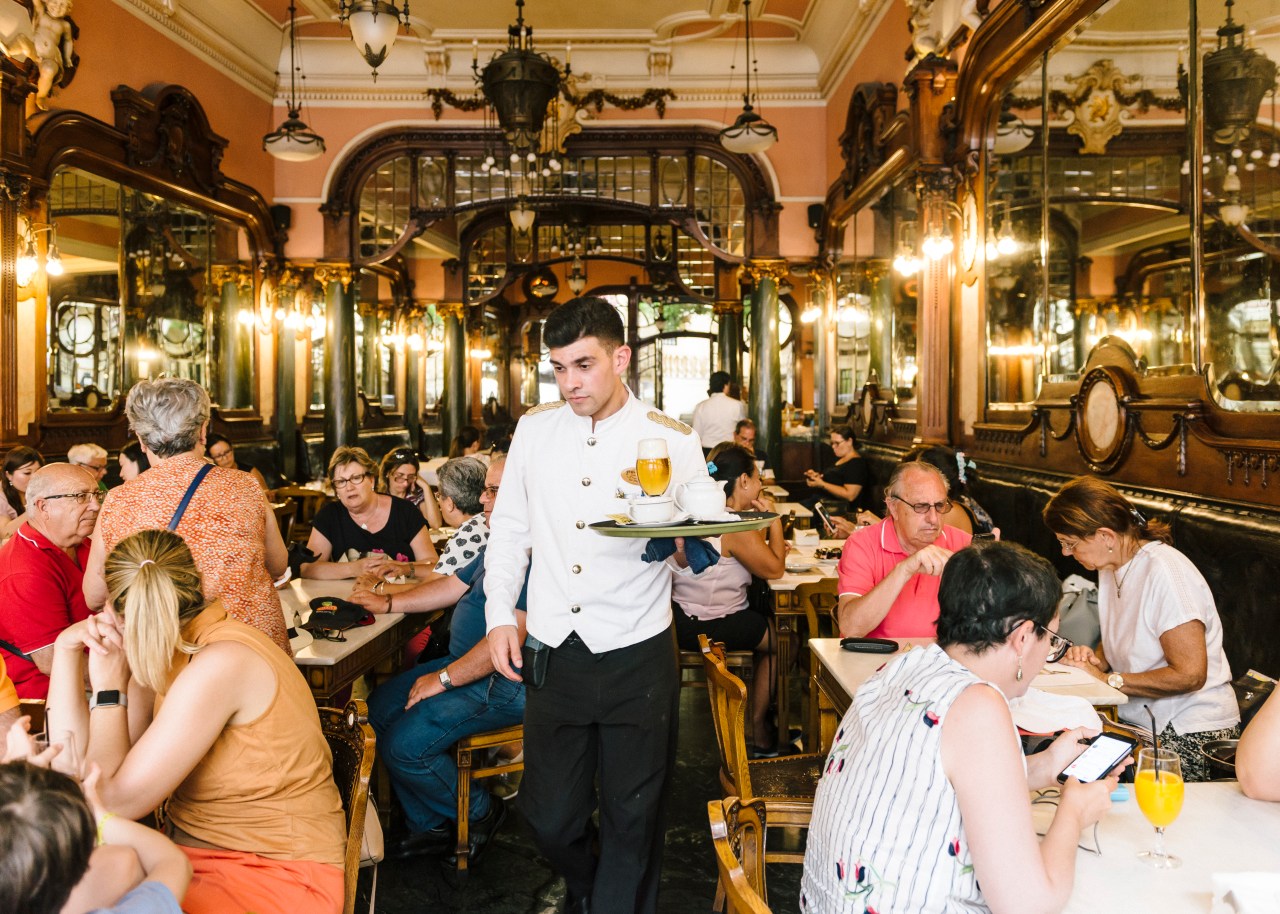
Walk five minutes down 31 de Janeiro Street, take a left at the end, and you’ll be stopped in your tracks by the majestic Estação de São Bento train station. This glass and iron structure, designed by architect José Marques da Silva, is a place of new beginnings for many. Look up at the ceiling, where 20,000 azulejo tiles painted by Jorge Colaço illustrate the transport evolution and Portuguese history.
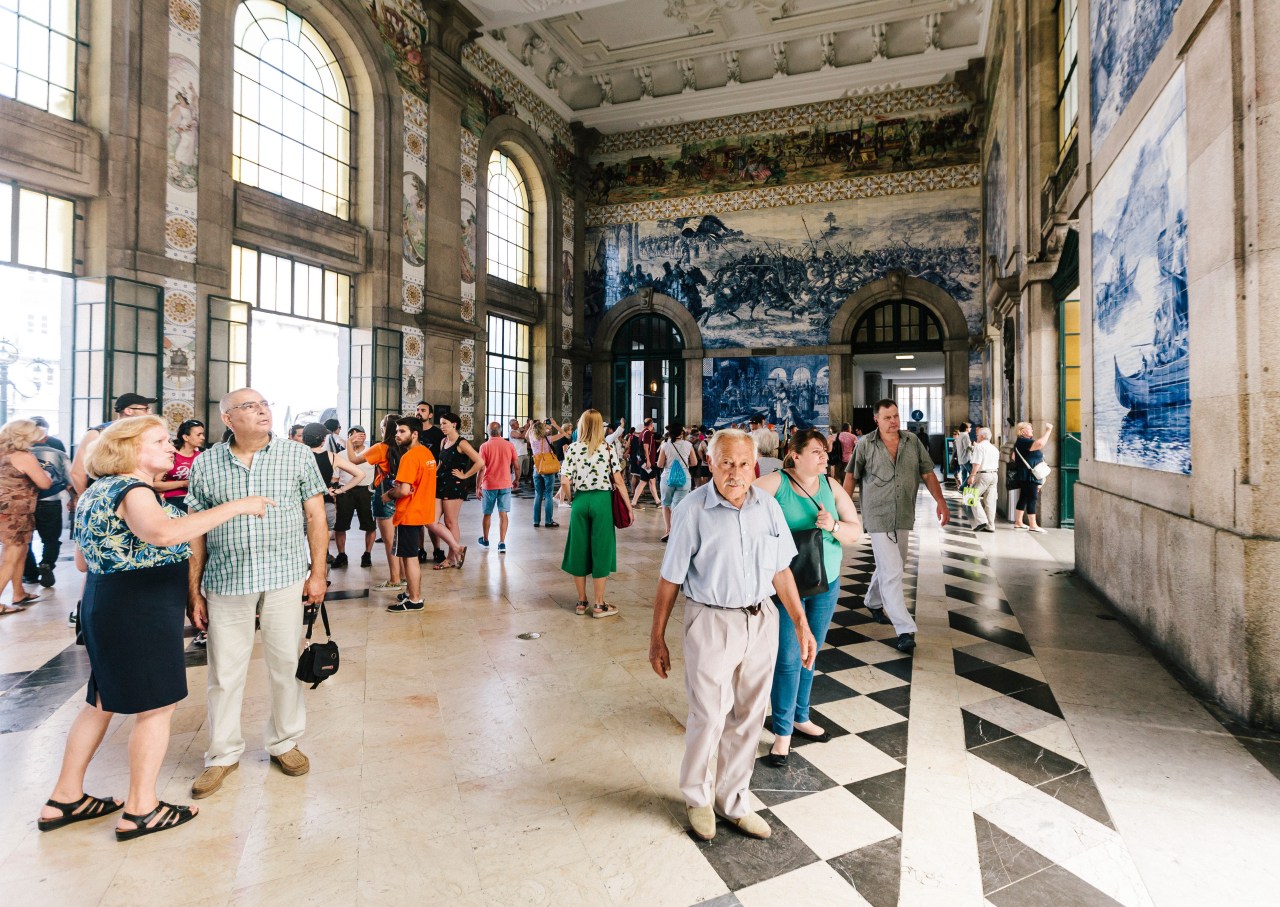
Once you leave the station you’ll stumble upon Avenida Dom Afonso Henriques, which heads to Muralha Fernandina, a medieval fortification built in the 15th century. Turn left at Rua Saraiva de Carvalho and grab a snack at Carmelita Bistrô. Then head to Largo 1º de Dezembro, where there is a police station. Pass through the entrance arch, turn left, then right, and you’ll spot the wall. You’re allowed to climb the stone stairs. Prepare to gasp as you take in Rio Douro, the jewel of Porto. (Pro tip: There are several boat tours from Ribeira’s small harbor.)
I love to sit on the little stairways of Muralha Fernandina and feel the soul of my city while picturing my favorite places. It always makes me think of the beautiful short documentary from 1956 by director Manoel de Oliveira, “The Artist and the City,” which associates the watercolor paintings of António da Cruz with a painter walking through the streets of Porto. From the stairs, you can see the place where the sea kisses the river, Porto’s seven bridges, and dozens of squawking seagulls.

From the fort, walk to the medieval borough of Sé. To go the less obvious way, head toward the superior part of Ponte Dom Luis I and cross through Codeçal, a hidden borough. (More precisely: After leaving the main entrance of Muralha Fernandina, go back to Saraiva de Carvalho, turn left, walk about 500 feet, and turn left again.)
On the way you’ll pass Casa da Guitarra, a music shop specializing in traditional Portuguese handmade guitars. Take your second right, walk down the stairs, then turn right again: You’ll see graffiti by Hazul, one of Porto’s most prominent street artists. Walk toward the graffiti and you’ll spot Codeçal’s stairways. Stroll through, enjoying the picturesque houses. Then turn right at Rua da Senhora das Verdades, and walk until you reach Rua Dom Hugo. Now that you’re in the right neighborhood, head to the Catedral da Sé de Porto, built in the highest part of the city in the 12th and 13th centuries.
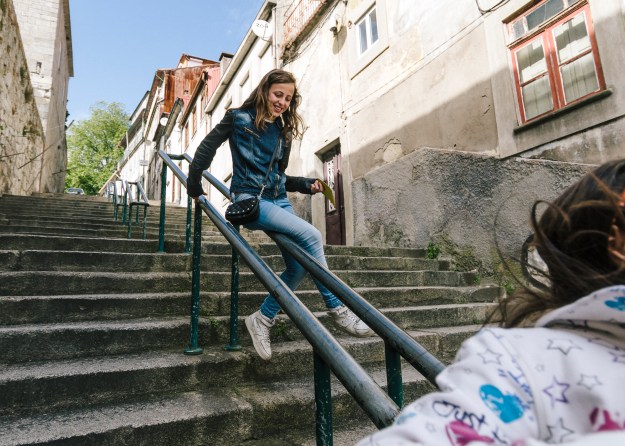
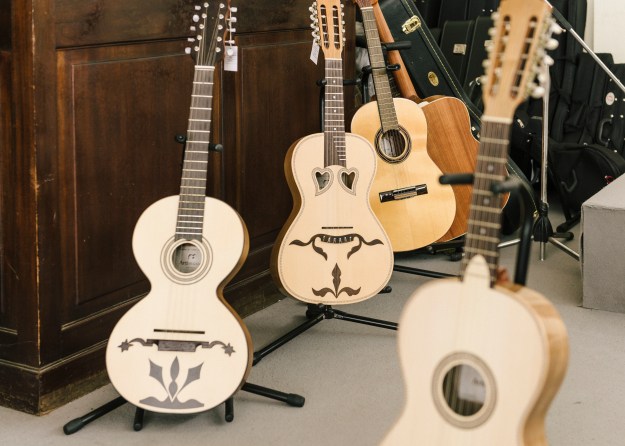
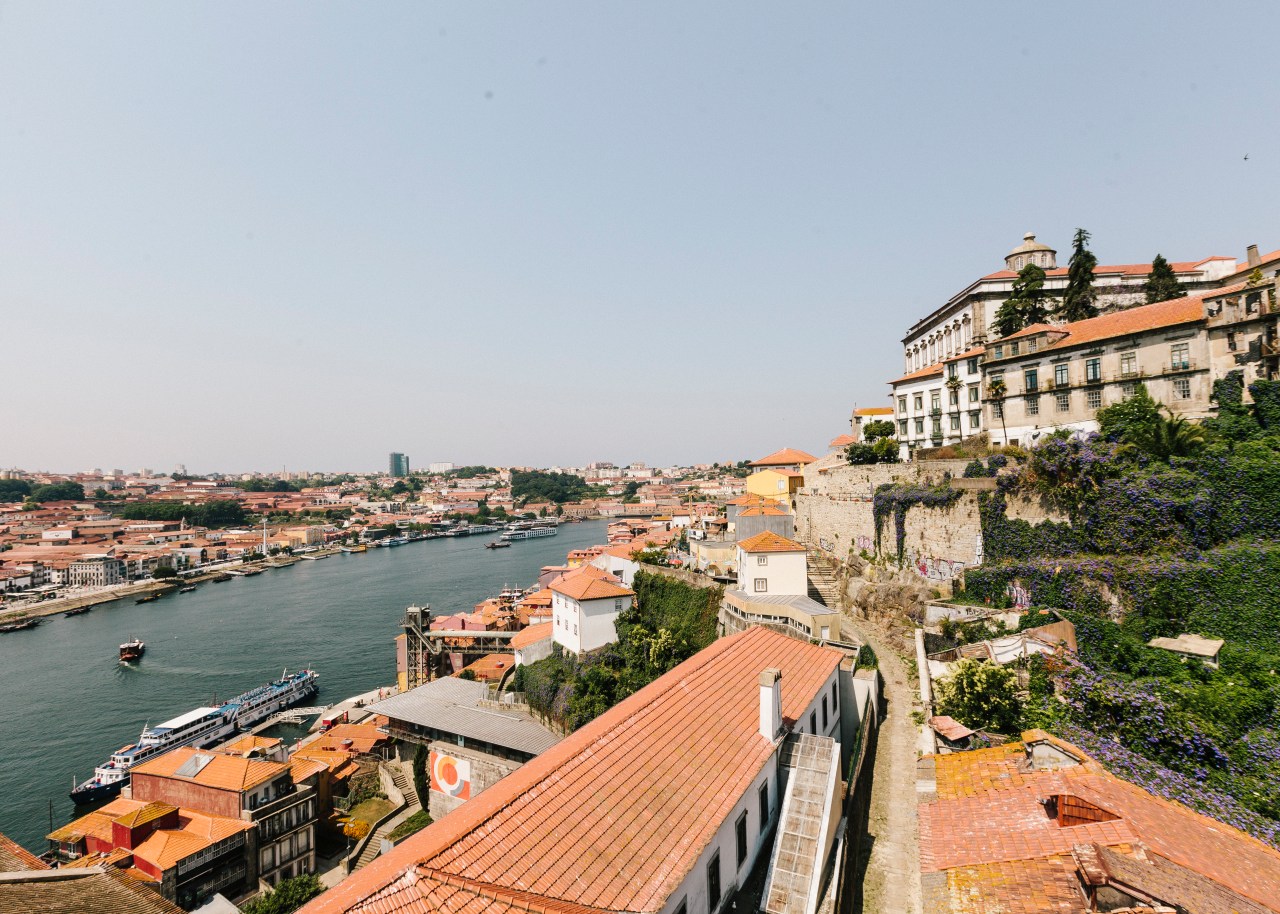
If the square here is too crowded or if you’re ready for another site, walk south via Calçada Dom Pedro Pitões until you reach Rua das Aldas. On the way you’ll cross Rua de São Sebastião from which you’ll see to the right Casa da Mariquinhas, one of Porto’s main houses of fado, a Portuguese musical genre often characterized by beautiful but mournful lyrics. There you can also taste Porto’s typical snacks, such as pataniscas (fritters made of egg, onion, parsley, and codfish). Stop at the beginning of Rua das Aldas and you’ll find a huge church: Igreja de São Lourenço (informally known as Grilos, which means “crickets”). From there take a leisurely walk through Sé; the architecture feels like a fairy tale.
The constant smell of onions frying in olive oil may have tipped you off that people in Porto love to cook. Fortunately, you’re in the perfect place to be hungry. There are indeed plenty of choices, like Dom Tonho, Restaurante Filha da Mãe Preta, Postigo do Carvão, and Escondidinho do Barredo. But I always take friends to Adega São Nicolau, a cozy restaurant that I’ve been frequenting for more than a decade. Throughout the years it has been reinventing itself without losing its authenticity, serving classical Portuguese dishes, from fresh fish to meat so tender it’s like butter. Some excellent choices include octopus fillets with rice, pork knuckles, fried sardines, and calf’s liver. The service is attentive, and they have an interesting and diverse wine list. Make a reservation, as it is always well attended. You’re right on the river, so take your time drinking in the fresh air and the relaxing vibe. You can have a coffee afterward at Café do Cais.

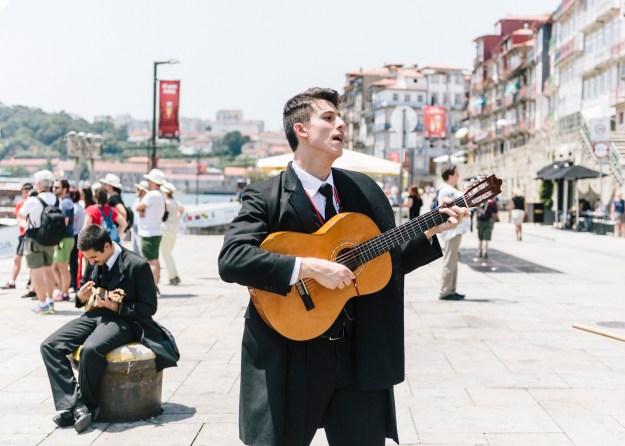
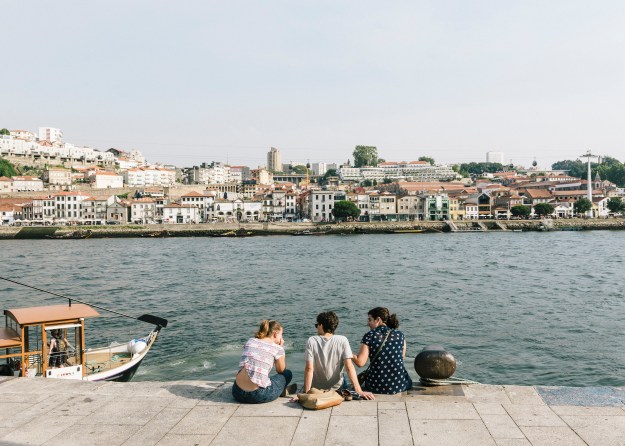
There are several museums and monuments nearby if you’d rather continue walking instead of making the next stop at a wine cellar. Try Casa do Infante, a museum where you can learn about Porto’s historical importance to Europe’s economy as a coin manufacturer. There’s also the neoclassical Palácio da Bolsa, now the headquarters of the Associação Comercial do Porto. The Church of São Francisco de Assís, a national monument and one of the city’s most important gothic churches, is also nearby.
Porto is famous for its wine, and you’re only a 20-minute walk from Taylor’s Port Wine Cellars. To get there you have to cross Ponte Dom Luis I, heading toward Vila Nova de Gaia. Once you’ve crossed the bridge, walk along the river bank. You’ll see a sign that reads Taylor’s in the corner of Espaço Porto Cruz. Climb the narrow, uphill Rua do Choupelo until you find Taylor’s. For 12 euros you’ll get an audio tour and a tasting of at least two kinds of port wine. This is pretty typical of Porto wine tastings. What distinguishes Taylor’s is the stunning balcony, which showcases the city in 180 degrees.
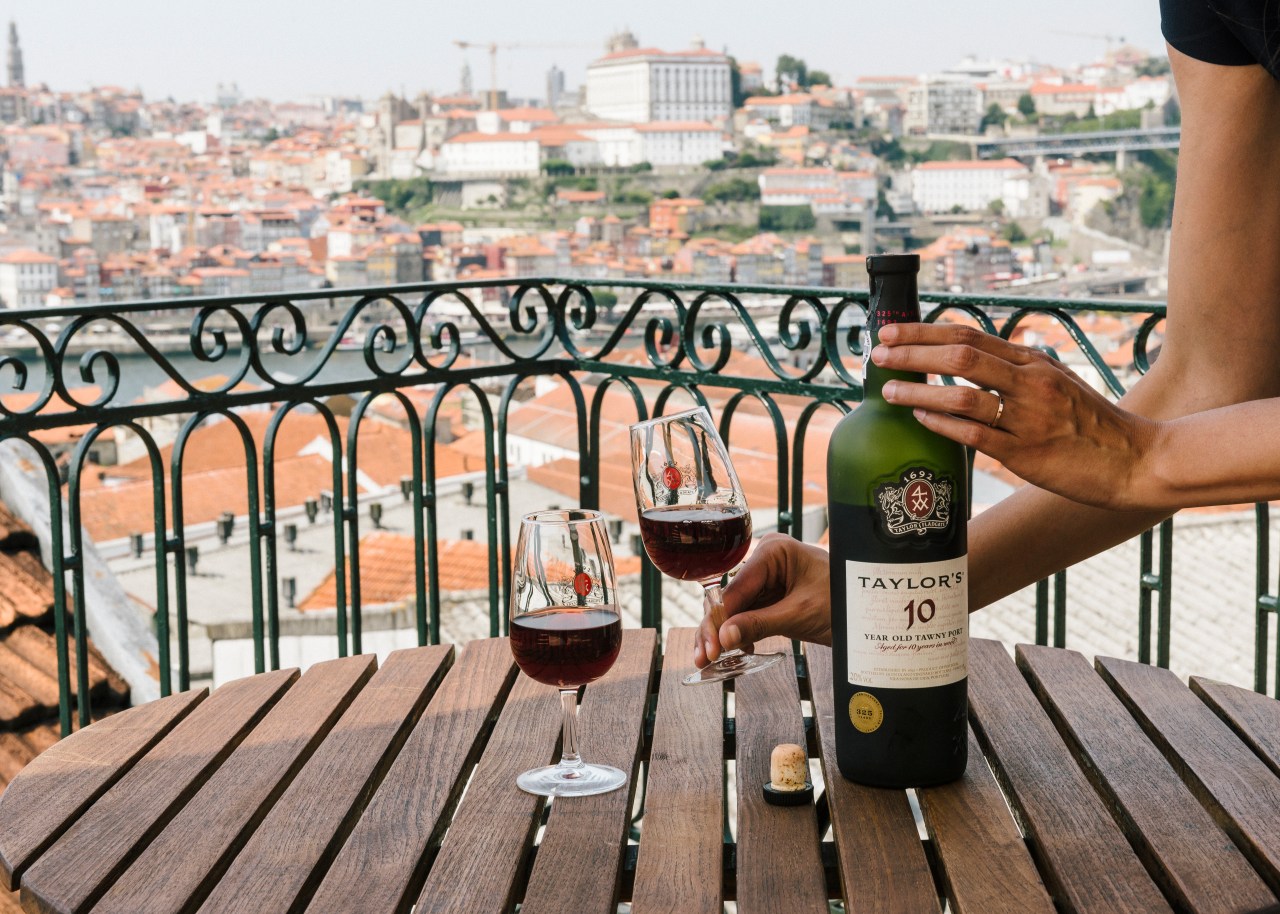
After the wine tasting head back to the heart of Porto to see the iconic Torre dos Clérigos. You can either take a cab to this final destination or walk about half an hour. (The walk is worth the effort.) To walk, cross the bridge again and follow the river bank to the left. Take a right at Praça da Ribeira, then a left toward the Palácio da Bolsa. At the end of Rua Ferreira Borges you’ll find your shortcut: the Escadas da Vitória. Climb it toward Rua São Bento da Vitória, where you’ll pass the Mosteiro São Bento da Vitória, occupying a part of the old Jewish quarter, and the magnificent Portuguese Center of Photography. At the end of this street you’ll see the Torre dos Clérigos, built in the baroque style of the first half of the 18th century. Walk up its 240 steps and go out on the narrow balconies to survey Porto’s picturesque orange roof tiles. Make sure to see the neo-Gothic exterior of the historical bookshop Livraria Lello.
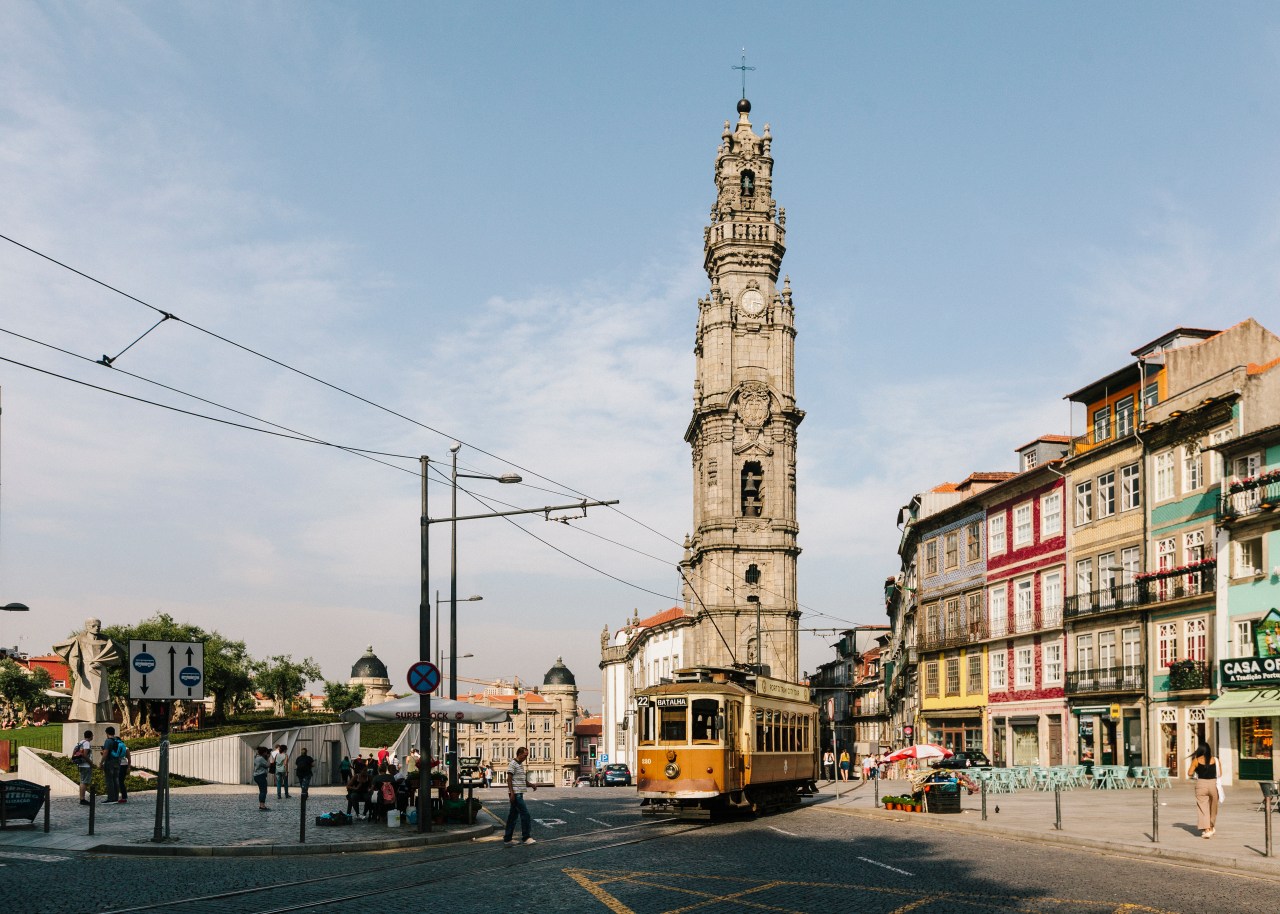

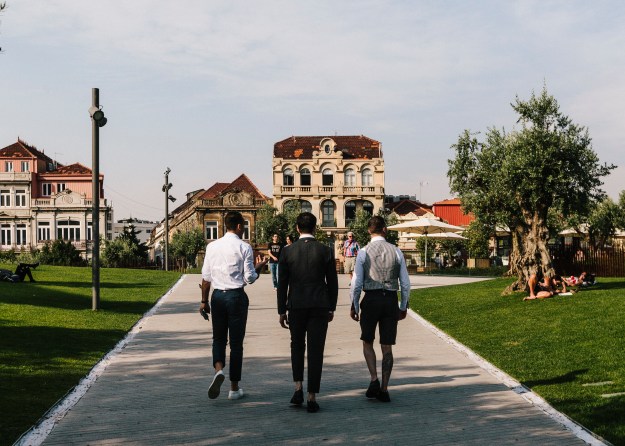
Head to Olive Tree Garden, just across the street from Torre dos Clérigos, for an appetizer and drink. Recently renovated, it is now a young and lively gathering spot with a cool terrace. With some luck there might be a sunset concert in the garden. Grab a snack and a beer and lie down or sit on the grass. This is what relaxing in Porto is all about.
This city has become international and eclectic when it comes to cuisine, and you can find excellent options ranging from sushi to steak. But you can’t leave Porto without tasting a francesinha, a complex layered sandwich composed of several kinds of meat and cheese, all melted and covered with a secret, special sauce of tomato, beer, meat, and hot pepper. The composition varies depending on the place, and you can find hundreds of restaurants that have adapted the recipe. Some of the most famous purveyors are Café Santiago (expect a wait at dinnertime) and Bufete Fase (tiny and familiar). Among the many new options Cervejaria Brasão is a great choice. I confess my favorite is Confeitaria Cunha, a gastronomic and architectural icon with a ’70s style—but don’t tell anyone.
